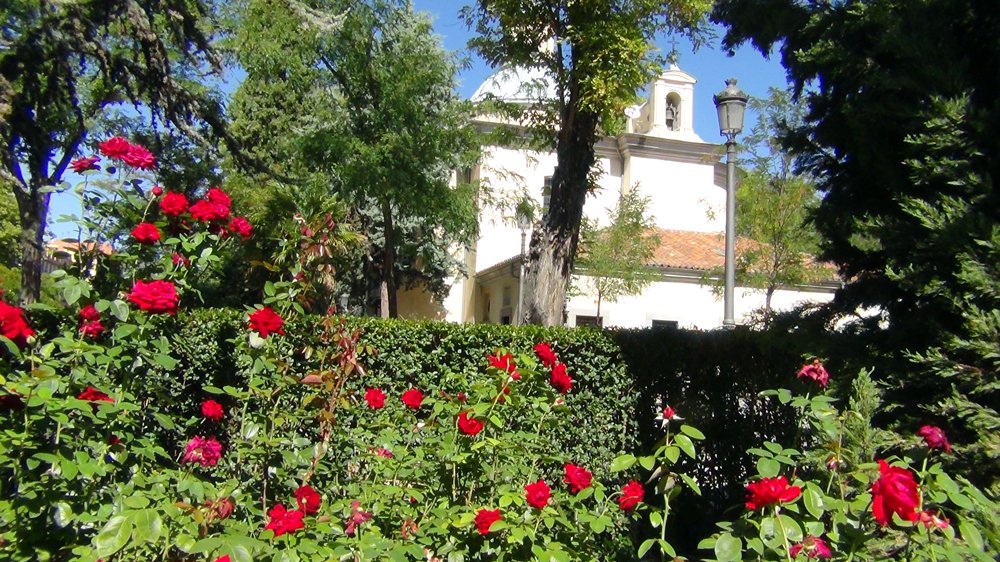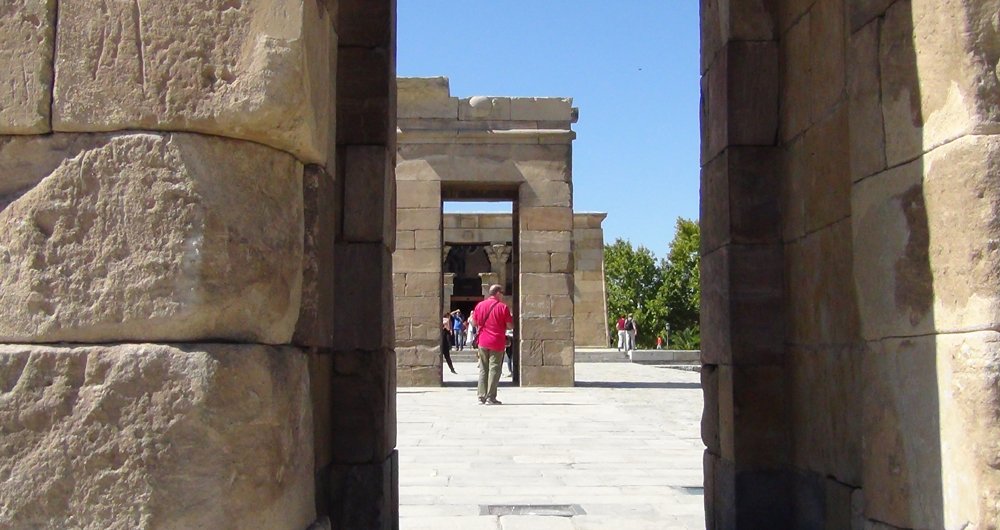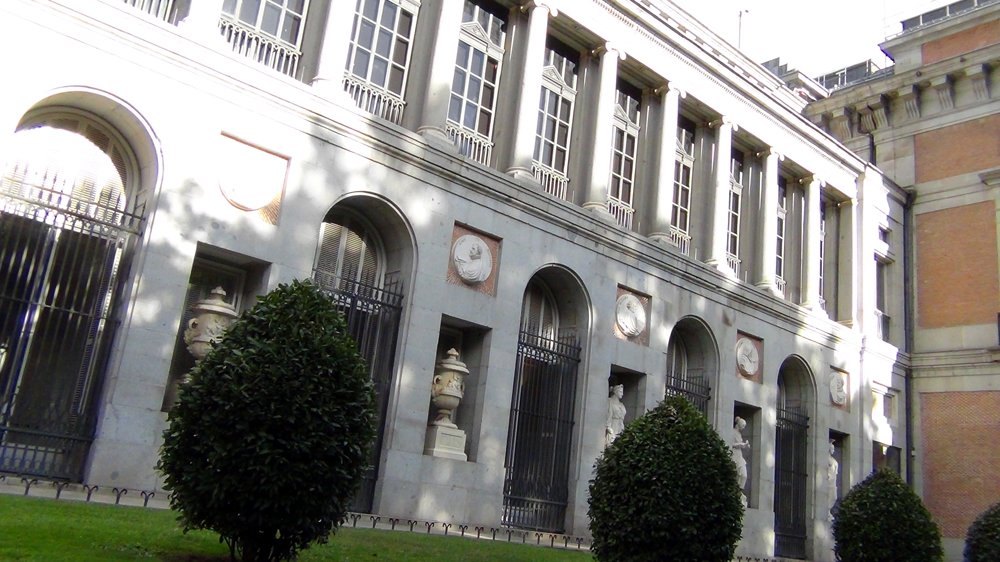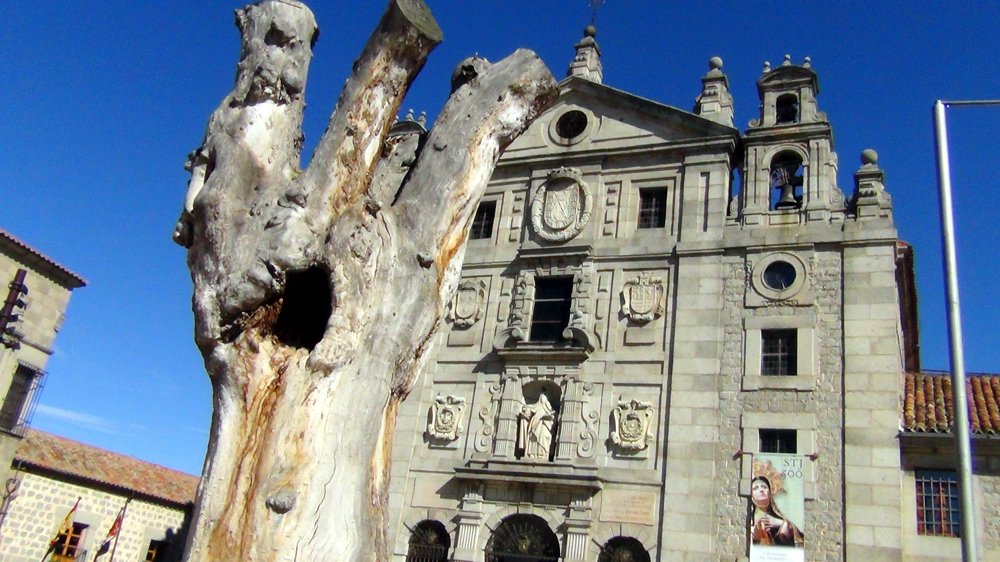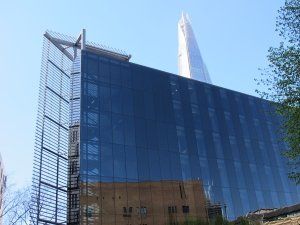An Impressionist’s View of Spain
A trip to Spain, which took place 15th-30th September 2015, came to fruition long after its conception. Indeed the conception may have coincided with that of cataracts growing in both my eyes. Time passed and when I eventually flew to Madrid I knew the dates of my surgery for cataract removal would be 21st and 28th October. It was, therefore, with cloudy vision that I viewed Spain.
I traveled with my friend of 37 years, Kristin. She had lived in Madrid during the 1990’s and longed to return to visit old friends and to explore some old haunts and new vistas. My yearning to be in Spain was to experience the new. In the 1960’s I had visited the island of Majorca and, on the mainland, the city of Granada. The latter had generated the desire to not only see more of Spain but to visit Morocco. This North African journey was taken in 2014.
When planning the Spanish trip we decided Kristin would do all the driving and I would navigate. When the sojourn began I was not so sure about the navigating part as I could no longer read the road signs – essential when navigating Spain’s numerous round-abouts. I had brought magnifying lenses, but wasn’t confident my eyes would register through them. So began a journey more stressful than I ever imagine travel would be for me. As I write this my surgery is still 2 days away so I do not yet know how my confidence will return; how the world will present itself to me in the future. To be sure this world traveler will not take my vision for granted in the future. I cherish the moment when I have the good fortune to see the world again. But that is in the future and now I will share the seeing of five places in Spain through an impressionist’s gaze.
We spent five nights in an Airbnb.com 2 bedroom apartment in the La Latino district of Madrid to begin our stay. Neither of us had booked via this agency before and we were thrilled with our successful venture. We had been joined by Ingrid from Oslo who stayed with us while we were in Madrid. Being in this city with those who had lived here in the past, introduced me to Spanish customs, food and the language.
On our second day in Madrid we headed to the Ermita de San Antonio de la Florida. It is a neo-classic building, now a decommissioned church, built by Charles 1V between 1792-98. The ceiling frescoes were painted by Francisco de Goya, depicting the miracle of St Anthony of Padua. The story is from 13th century Lisbon. Goya illustrated the scenes as if in his own era, painting the frescoes in the light and brightness of Madrid in 1798. It was an enchanting place despite the fact that it is the resting place of Goya’s remains, brought there in 1919. Mirrors tilted upwards allowed one to view the art work on the ceiling without straining the neck. I peered into the mirrors, I strained my neck to look upwards. I could see the colours of flowing clothes but each face remained blank. If I could have been allowed to take photographs I could have zoomed in my focus and viewed the images on my screen. I can see up close. But a clouding haze blurs everything at a distance. I have the bilingual flyer depicting a girl with arms stretched above her head, eyes looking up, her nose finely formed and her long hair flowing behind her. She sports a reddish rust sash. This I can see relatively clearly twelve inches from my face but she was separated from me in situ by a veil.
The route back to La Latina took us through a park area and the Egyptian Templo de Debod which had originally stood south of Aswan in Egypt. It was gifted to Spain in 1968 in appreciation for help in raising the temples of Abu Simbel from the rising reservoir waters behind the Aswan High Dam. I was in Aswan in 1978 and visited the saved reconstructed temples of Abu Simbel.
On our walk this September day we passed the monument for the Spanish poet and playwright Miguel de Cervantes Saavedra including the statue of Don Quixote and Sancho Panza in Plaza de España. They were quite amazing close up.
I realize how much I have accommodated my visual loss over this past year. I have stopped driving at night because the halos and glare of headlights cross my whole field of vision. I have stopped cleaning my glasses so regularly expecting it to make a difference. I let the familiar shapes of words on road signs guide me rather than waiting till the sign is about to pass before I can distinguish the letters. I have relied more on recognizing friends by their gestures, shape and walking style than seeing their face. This was especially so if the light was behind them. Then they came to me a dark silhouette. It is only when I place myself in a totally unfamiliar environment do I realize my loss. When I was standing below Goya’s frescoes, seeing the faces completely void of features, I knew how grateful I was that my surgery dates were scheduled.
Claude Monet, the pioneer of impressionist painting said in 1922 “My poor eyesight makes me see everything in a complete fog.” Although he received surgery to remove one cataract, he never had it done on the second. He had been depressed by his diminished eye sight and in 1914 had complained that reds had begun to look muddy. The fog is something with which I can identify. Colours for me may be dimmer but I do not think changed. But for Monet the fog was yellow, vastly changing the colours, and his paintings from his ten years with cataracts show the impact. Indeed it is said that only by reading the paint tube labels did he know the colour others would see. Edgar Degas had a retinal degeneration and his later paintings failed to show defined features and were coarser in texture. The work of both artists became more abstract as their visual acuity decreased.
I entered Museo Nacional Del Prado. I let my friend Kristin select the few acclaimed pieces, understanding that the internet and art books at a later date would enable me to “see” them for the first time. But I would have been in their presence and have gained an impression of them, just as Monet and Degas, if they had ever visited the Prado, would have done.
Kristin took me to see the salon with Goya’s Black Paintings from 1819 -1823. Originally painted on the walls of his house near the end of his life they are haunting reminders of the pain of aging, being deaf, fearful and disillusioned with life. There certainly was no joy evident that had been seen in the ceiling frescoes at the Ermita de San Antonio de la Florida, painted early in his life. A reminder of how we change.
Then to the salons of Diego Velazquez. Since I could stand relatively close to these paintings they were clearer that the Goya ceiling frescoes at the Ermita. I could even see the facial expression and texture of the clothing materials at eye level. However once I had to look up, the clarity faded. And so it was that I stood before Las Meninas, the courtly work of Diego Velazquez from 1656, the era of Philip lV of Spain. From its blurred presence I could tell there were many figures, including those reflected in a mirror whom I yearned to see in detail.
A low cord kept us from getting too close to the paintings but it also separated me from the written information panels to the side of the pictures. At one point I learned over to read the script. A strident voice in severe Spanish came over my shoulder. I knew what the words meant. “I’m only trying to read the words” I said lamely. The resulting Spanish response for all I knew was “I don’t give a flying F, get away from the pictures.” Suddenly I had a need to stand up for all those with visual problems. I took one of the magnifying lenses from my purse and standing straight up expended my magnifying lens. No one bothered me. Trouble was the distance and the lens focal length didn’t match and I was no better off.
From Madrid we drove north. At Santo Domingo de la Calzada we came into the world of the Camino de Santiago. It was evening before we walked the streets and by 9pm they were empty. Street lamps shone on the damp stone houses with doors opening straight onto the narrow streets.
There were signs for peregrino (pilgrim) lodgings, and the iconic sign of the scallop shell was etched into the paving stones. I stood in the stillness, marveling at the experience. Just being there where millions have trod with aching feet, differing goals and expectations and spiritual journeys. All of us on a different path through life, all searching for a way to take ourselves from the edge of the shell and turn to the centre. There was an eeriness in the darkness. Shadows fell on old wooden doors locked against the night. But it was the street lights that occupied my attention. The balls of light like those white fireworks which shoot out from the centre getting bigger until the edges fade into the night sky. These street lamps, as seen through my cataracts, blazed out to consume the whole street. Leaving the street where they did not reach, oh so dark. My first steps on the Camino are held firmly in my memory.
We drove into the Basque country, the Rioja wine district, the Bay of Biscay coast and came to the ancient town of Santillana del Mar in the Province of Cantabria. Being there in September meant there were fewer tourists filling the narrow cobbled streets of the medieval village. It is situated in a mountainous region filled with caves. For us it was a stopping off ground for the Altimera caves and more important to my story, high in the mountains, the el Soplao. Our timing was perfect. We bought our tickets at our hotel for 2pm. High in the mountains we went to the train platform. The train was like those miners used to go into the mines. We were the only people there and the guide could therefore give us an hour of her time speaking in English. I have been in several memorable caves of stalactites and stalagmites including Majorca’s Caves of Drach (1960s) and the Luray caverns in the Shenandoah valley of Virginia (1970s). But this was different, 40 plus years later.
In an article about different forms of speleotherms (stalactites etc) Rui Nunes wrote of those called eccentric – “The threads of calcite or aragonite are interwoven, making whimsical knots beyond any restriction imposed by Earth’s gravity.” The Soplao caves were filled with such wonderful creations defying gravity with their multi-directional patterns. Some looked like a head of hair caught by electricity and sticking up in all directions, others looked like roving worms. It was a magical experience. However light was focused on the structures with only minimal on the ground we walked. The guide told me there were no steps, it was all on the flat. I could not tell, I walked hesitantly looking down at my feet and not gazing in wonder around me. Until I had to make the decision to trust. A difficult decision. I did not want to slip or fall but I had to give up the control and allow someone to lead me. Oh how these cataracts are teaching me to be humble. As we left the caves by the train we saw a coach load of Spanish students arriving and felt so blessed that we had experienced the caves alone.
The final location where my cataracts and I had to interact was Avila, north west of Madrid. This is a walled medieval town and a UNESCO World Heritage Site. The event I wish to share occurred in the Baroque church attached to the Convent of St. Teresa. She was a mystic, writer and reformer of the Carmelites. St. Teresa was born in Gotarrendura in 1515 and spent her childhood in Avila. She founded the Convent of St Joseph in 1562 and went on to start 15 more around Spain. She died in 1582.
This convent bearing St Teresa’s name, in the Plaza de la Santa, was built in 1636 after her canonization. The church I entered was built on the site of her childhood home. Most references to the story insist she was born in this house.
An alcove to the left of the main church entry takes one to several intimate areas. Through a glass window one can look down on a small garden where Teresa was reputed to have played. Close by is a chapel honoring her and beyond this a bedroom displaying evidence of a wealthy family. One can look at it though a wall of glass.
We came upon this area without the crowds. We could sit in the chapel where there were very few chairs. We could be in silence absorbing the hallowedness of the environment. I am not a Catholic, I am not familiar with the lives of saints. But her story is one of adventure, determination, pain and redemption. An amazing read. This quiet corner captivated us. It drew out a spiritual empathy in me for a woman whose life I could not envisage experiencing. Our peace was soon broken by the next group of time counting tourists who looked, chatted and took their photos before leaving.
Did anyone stop to question the meaning of the paintings, did any understand the pain that brought Teresa ecstasy? Did they know of her soul journey and that of colleague St. John of the Cross? Did they know the meaning of the “cherub faces” carved on the walls of the chapel which did not look like cherubs?
They looked at the bedroom and made comments about not knowing nuns slept in four poster beds with crimson bed spreads. Then there were those who spoke languages other than English who giggled and left. When all was quiet I went to the glass window which separated the young Teresa’s bedroom from the hoards. The light was dim. I tentatively went forward pointing my toes to determine if there was a step or not. My hand went before me for I had no idea where the glass window started. I did not want to bang my nose on it. All who had been around me had shown no such hesitation.
I know that when I have my new lenses in place I will see the world very differently. Perhaps as never before. Will I soon forget this version of reality by taking my enhanced vision post operations for granted? Only time will tell. But I do know that the memory of travelling in Spain as an impressionist will not change. For the colours of the plains of La Mancha, the mountains in the north and the cold blue of the Atlantic ocean all lend themselves to blurred edges. The clarity in the works of Goya and Velazquez will have to wait.





